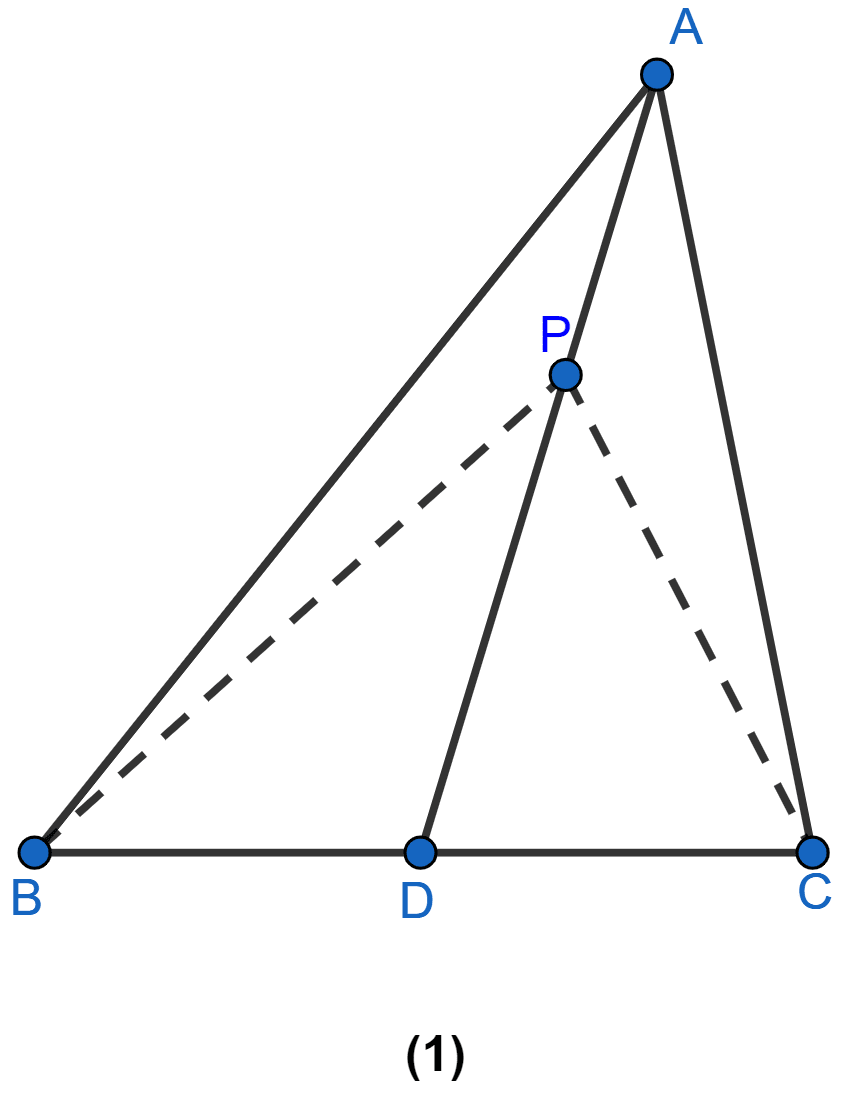Mathematics
In figure (1) given below, AD is the median of ∆ABC and P is any point on AD. Prove that
(i) Area of ∆PBD = area of ∆PDC.
(ii) Area of ∆ABP = area of ∆ACP.

Answer
(i) In ∆ABC,
Area of ∆ABD = Area of ∆ADC [AD is the median] ……(1)
Since, PD is a straight line and base of ∆ABC and ∆PBC,
So PD is median of ∆PBC,
∴ Area of ∆PBD = Area of ∆PDC ……..(2)
Hence, proved that Area of ∆PBD = Area of ∆PDC.
(ii) Subtracting eq. 1 from 2 we get,
⇒ Area of ∆ABD - Area of ∆PBD = Area of ∆ADC - Area of ∆PDC
⇒ Area of ∆ABP = Area of ∆ACP.
Hence proved that Area of ∆ABP = Area of ∆ACP.
Related Questions
Prove that the line segment joining the mid-points of a pair of opposite sides of a parallelogram divides it into two equal parallelograms.
Prove that the diagonals of a parallelogram divide it into four triangles of equal area.
In the figure (2) given below, DE || BC. Prove that
(i) area of ∆ACD = area of ∆ABE
(ii) area of ∆OBD = area of ∆OCE.

In figure (1) given below, ABCD is a parallelogram and P is any point in BC. Prove that, Area of ∆ABP + area of ∆DPC = Area of ∆APD.
